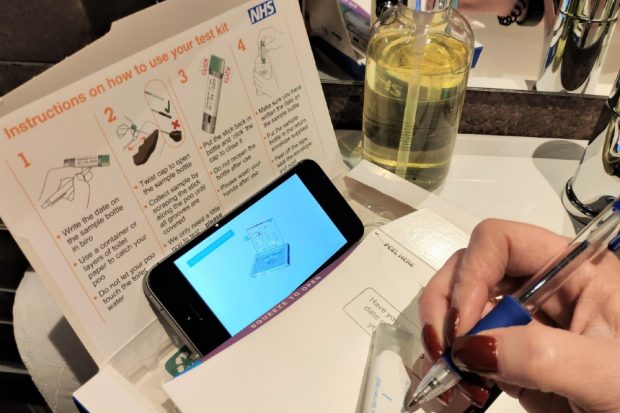
The new bowel cancer test kit, known as ‘FIT’ (faecal immunochemical test) has been sent out to all bowel cancer screening participants since June 2019.
This new test is quicker and easier to complete than the previous guaiac kit that required 3 separate poo samples. The FIT kit only needs one.
To support participants in understanding how to complete the new kit, the national bowel cancer screening team, alongside MAST (the FIT supplier), have made an instruction video.
Accessible for everyone
The video gives a step-by-step explanation of what participants need to do to collect the bowel sample correctly.
It covers:
- what the package contains
- how to remove the test kit from the box
- writing the sample date on the test kit
- how to collect and take the stool sample
- how to send the completed test back in the post
You can see the video on the NHS.UK page about the home test.
The link will also be added to the package that bowel cancer screening participants receive through the post.
Subtitles have also been added to improve accessibility for people with a hearing impairment. These have been translated into the most common languages requested by the bowel screening programme: Bengali, Polish, Portuguese, Arabic, Farsi, Gujarati, Punjabi, Simplified Chinese, Traditional Chinese and Urdu.
The other subtitled videos are gradually being uploaded to Vimeo, but you can also find the link to them on NHS.UK.
Working together to increase uptake
A set of clear instructions was developed with the bowel cancer screening teams to provide the narration to the video.
An animation company was brought in to make changes and improvements to the original video that MAST had previously made, to tailor it to the needs of the screening programme.
The video has been developed as part of the screening team’s work to help meet several objectives.
These include:
- reducing inequalities
- providing more detailed instructions in a format that is more accessible for people with additional learning needs
- providing information for people where English is not their first language
- offering more information than the instructions that come with the kit
Although the uptake of bowel screening is now higher using this new test kit, we hope that having this additional resource will make it even easier to complete.
We also hope that it will help to improve participation from any group who may have been less likely to take up the offer of bowel cancer screening in the past.
PHE Screening blog
The PHE Screening blog provides up to date news from all NHS screening programmes. You can register to receive updates direct to your inbox, so there’s no need to keep checking for new blogs. If you have any questions about this blog article, or about population screening in England, please contact the PHE screening helpdesk.
7 comments
Comment by Toshiro posted on
I asked my East Sussex GP about screening at 55yrs and he knew nothing about it.
Are you contacting patients direct?
Comment by lisaleano posted on
Thank you very much for your question. I believe you are referring to bowel scope screening, which is the part of the programme that commences at the age of 55 years. This part of the programme is currently being rolled out across England by NHS England as they commission the service. The bowel cancer screening centres have all of the GP practices in their geographic area in a plan and they are working with their NHS England commissioning teams to attach GP practices when their plan supports this.
Comment by Toshiro posted on
Can the plan be shared please?
Comment by lisaleano posted on
Thank you for your further clarification. Each screening centre has individual plans, so the best way of finding this information is by contacting your local bowel cancer screening centre. I'm sorry, but there is not one plan for the country,;they are local screening plans that reflect local differences.
Comment by Colin Jones posted on
Just seems a lot of material to transport a small phial from A to B to C. Doesn't matter though it is only the public's money. Don't get me wrong I think the test is wonderful.
Comment by Colin Jones posted on
Why can't the large tray of plastic be replaced by cardboard.
Comment by lisaleano posted on
Thank you for raising this query. The plastic used for the trays is made from recycled plastic and is fully recyclable itself through standard council domestic plastic waste recycling schemes. It is not ‘single use’ plastic. The plastic tray also provides the necessary rigidity required to ensure the box is robust through the postage network and protects the vial adequately.
However, there are alternatives to plastic such as moulded pulp fibre. These options are extremely expensive at the moment, but it is expected that the cost will reduce in time. At that point, it is expected that the materials they use would be reviewed as the environmental impact of the materials is something that is considered.